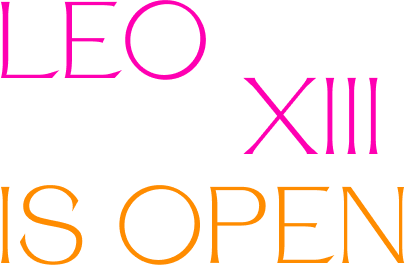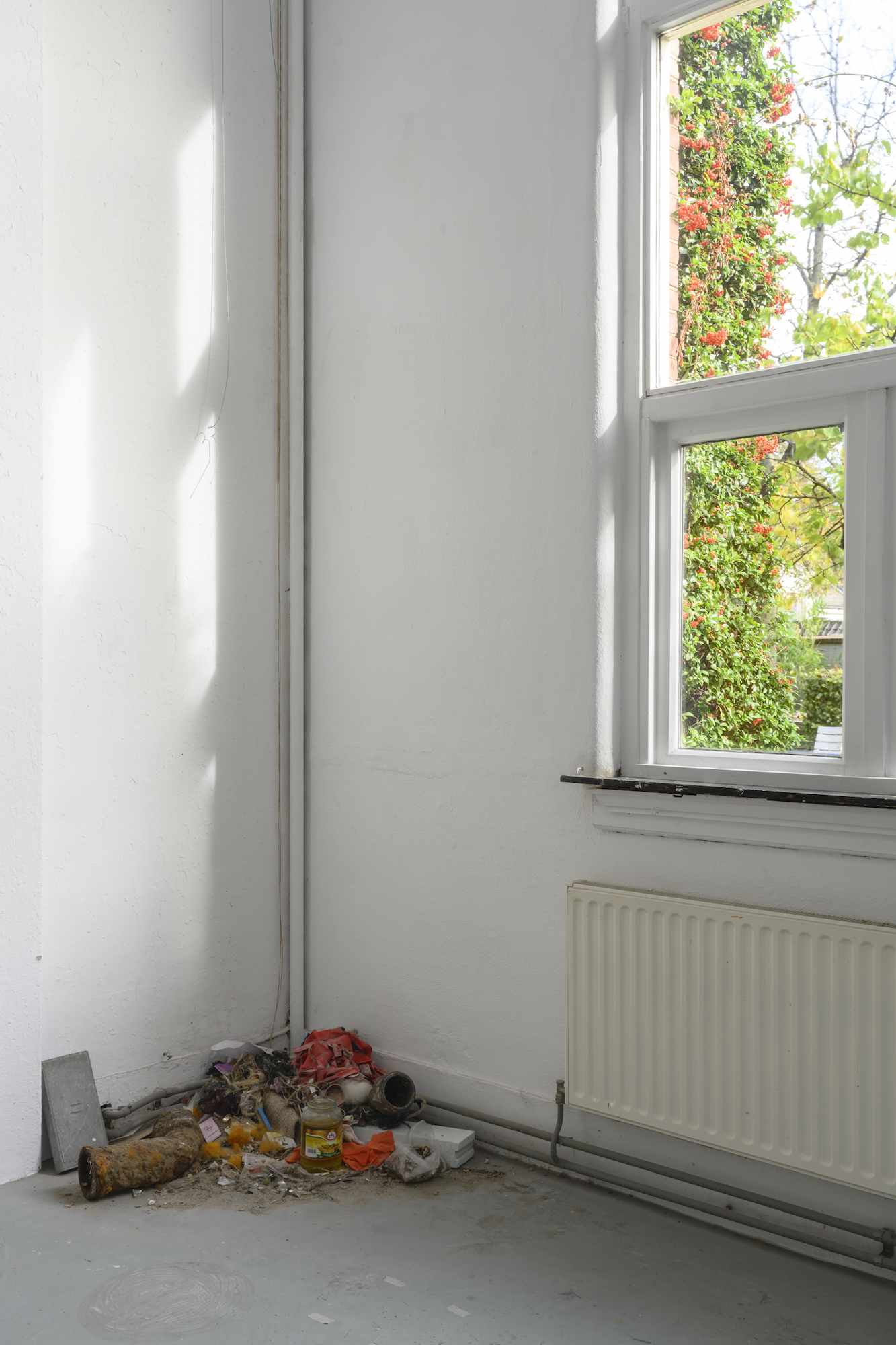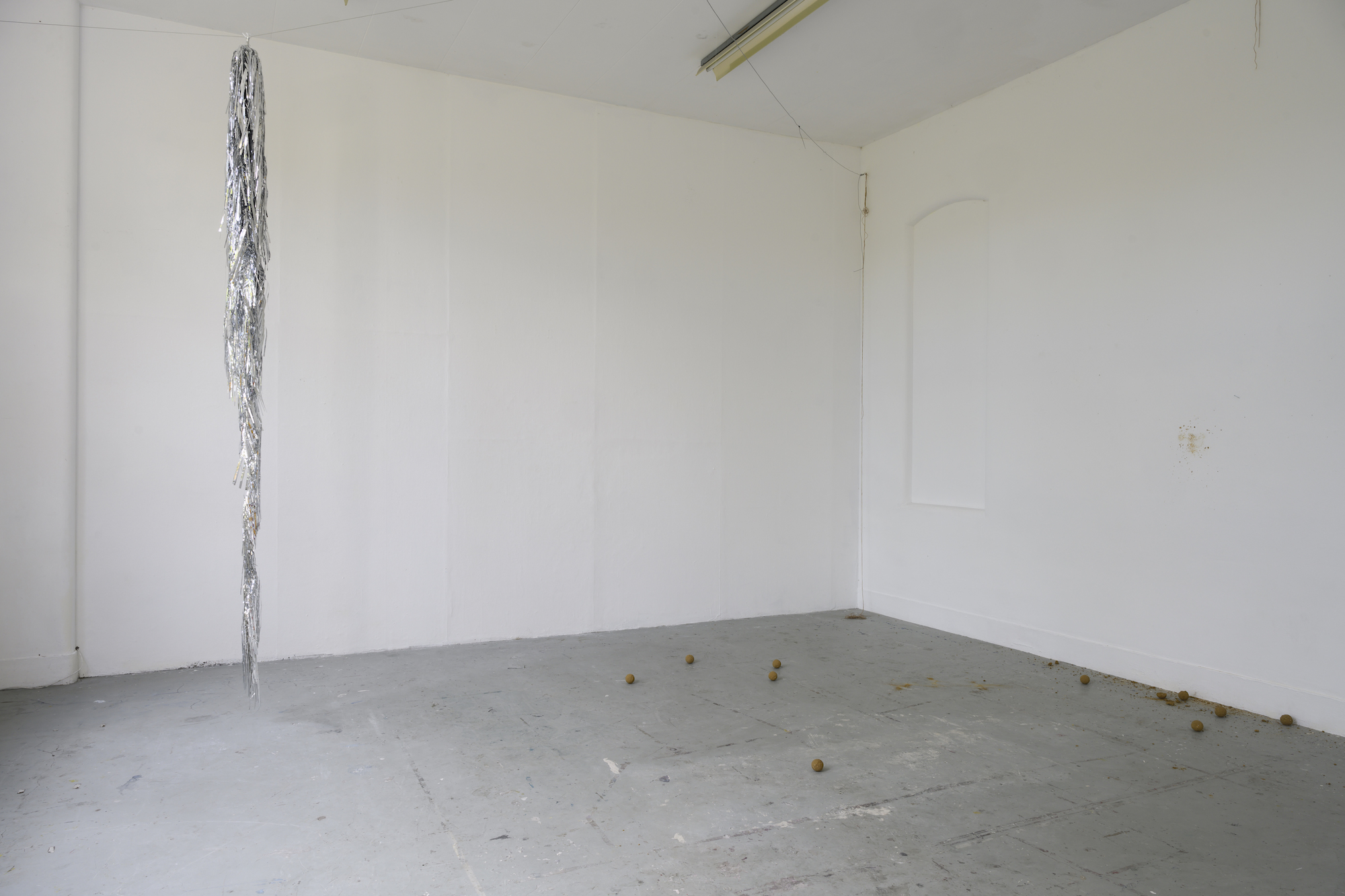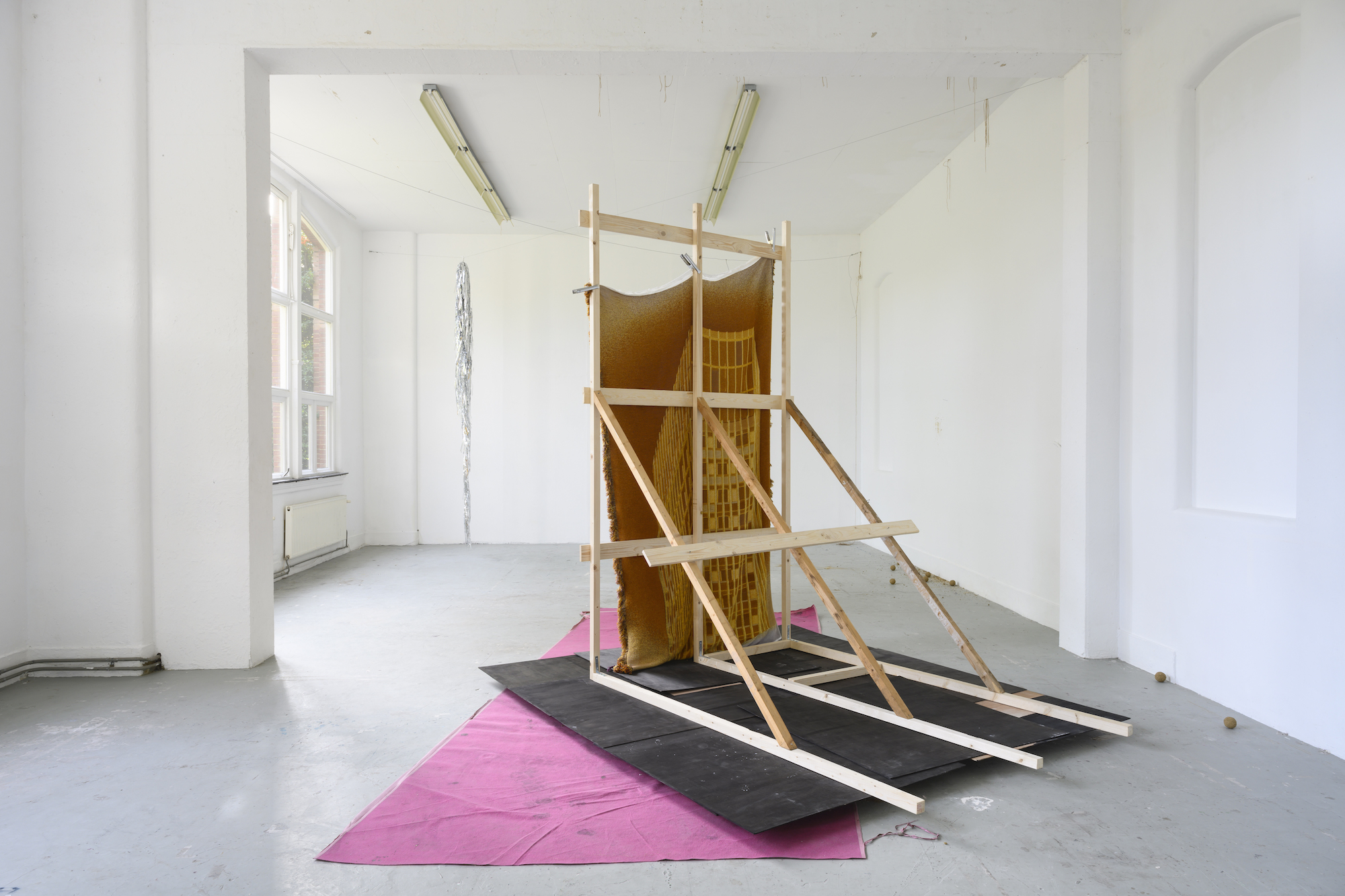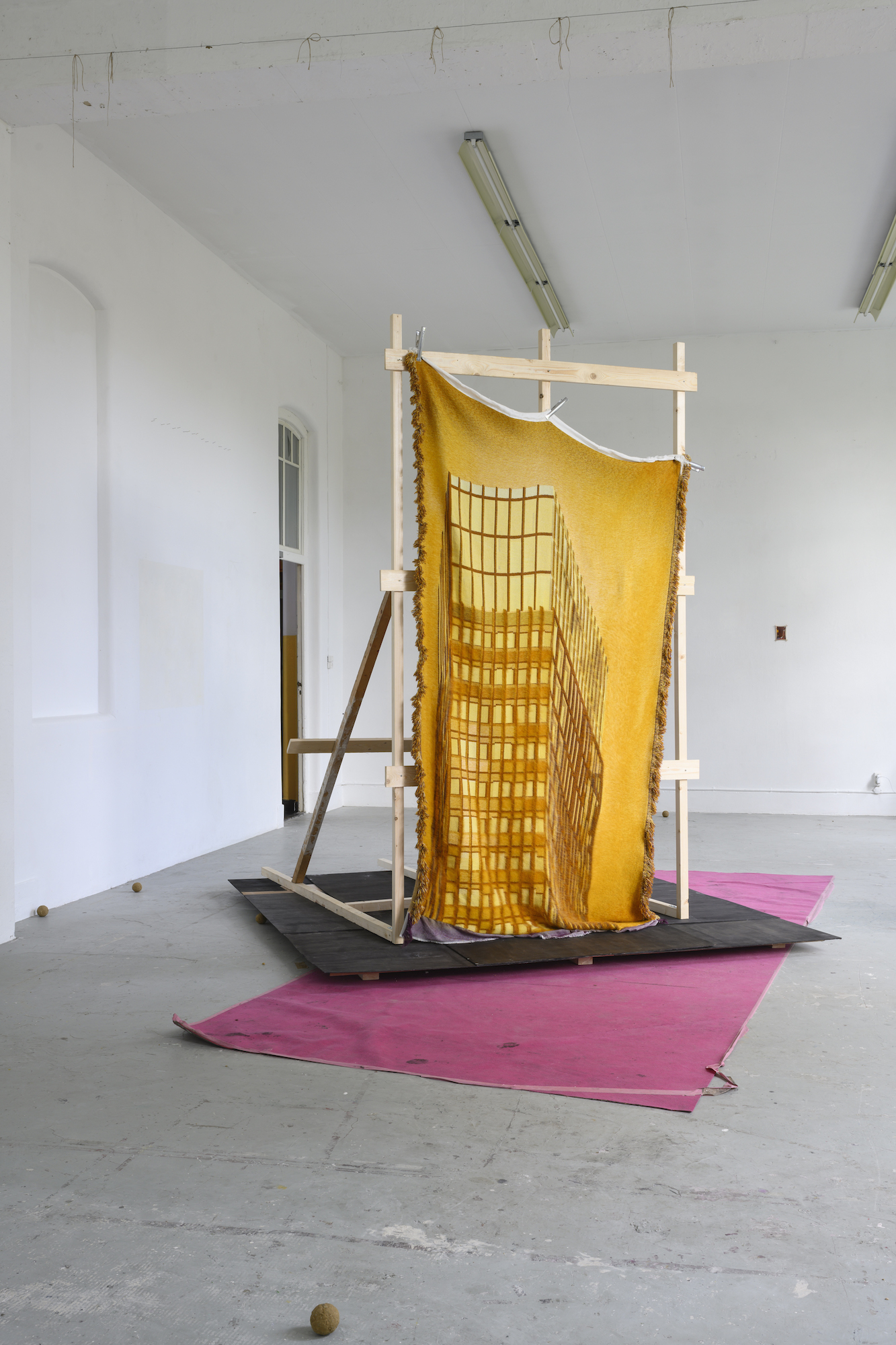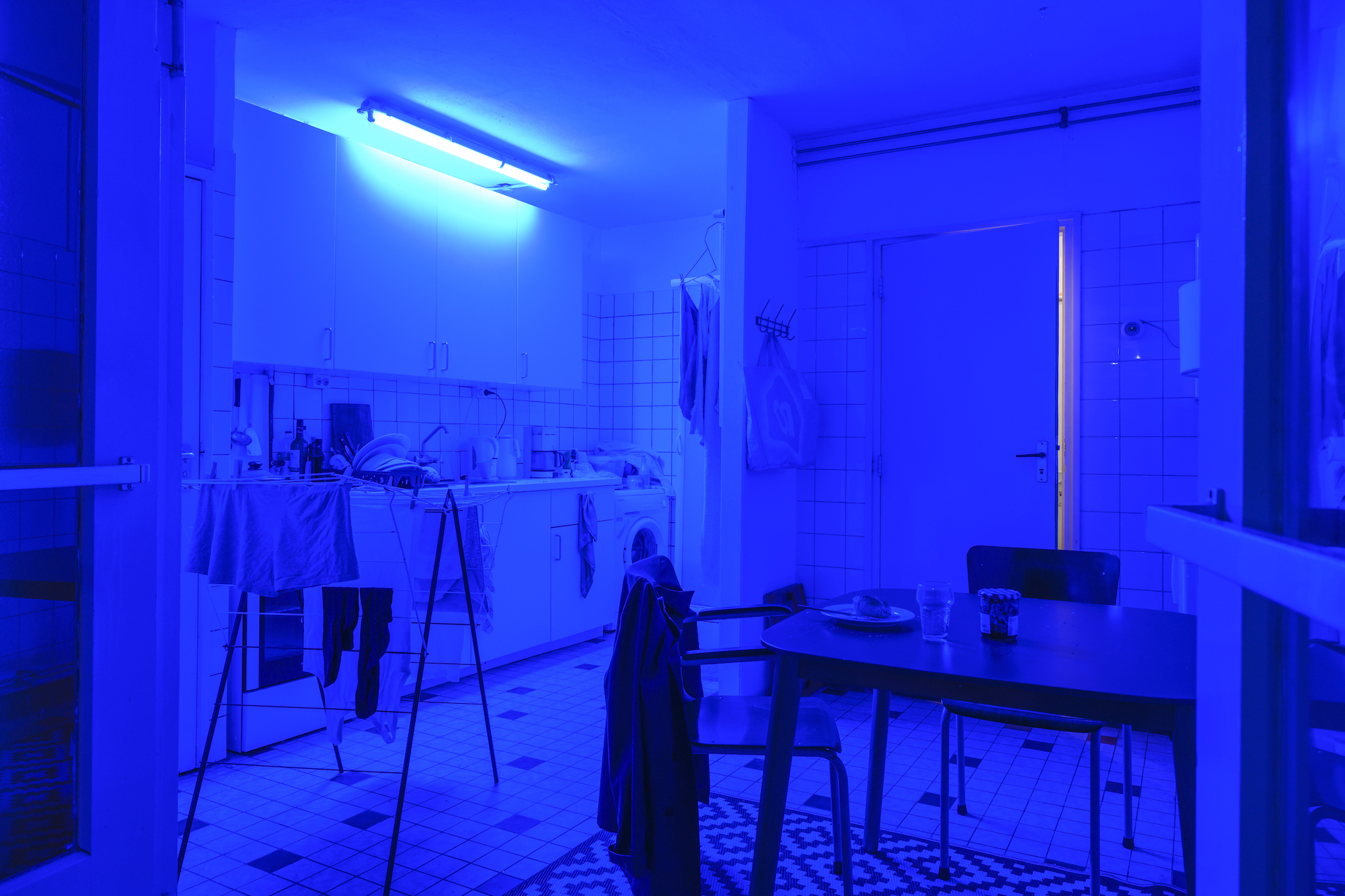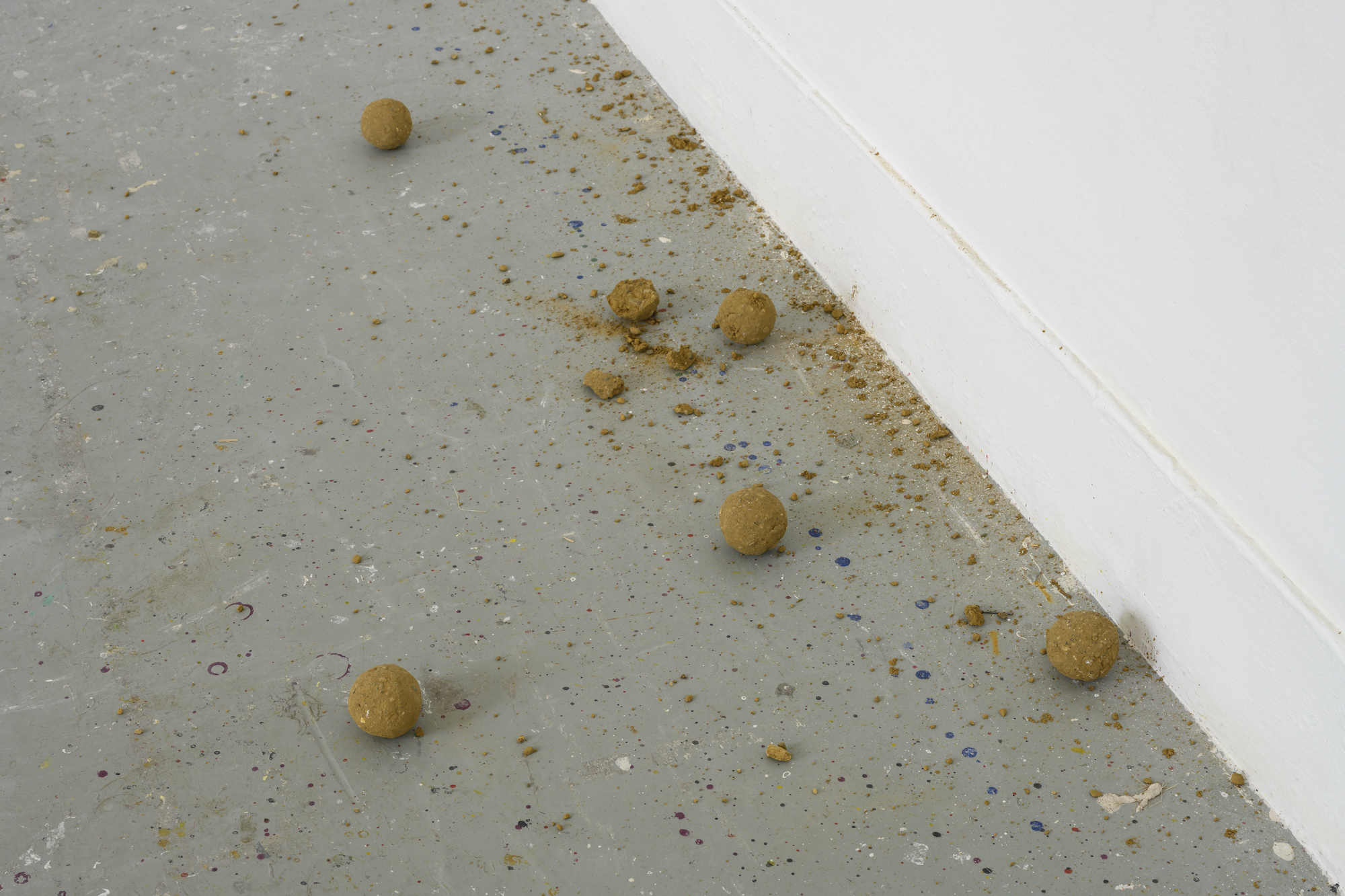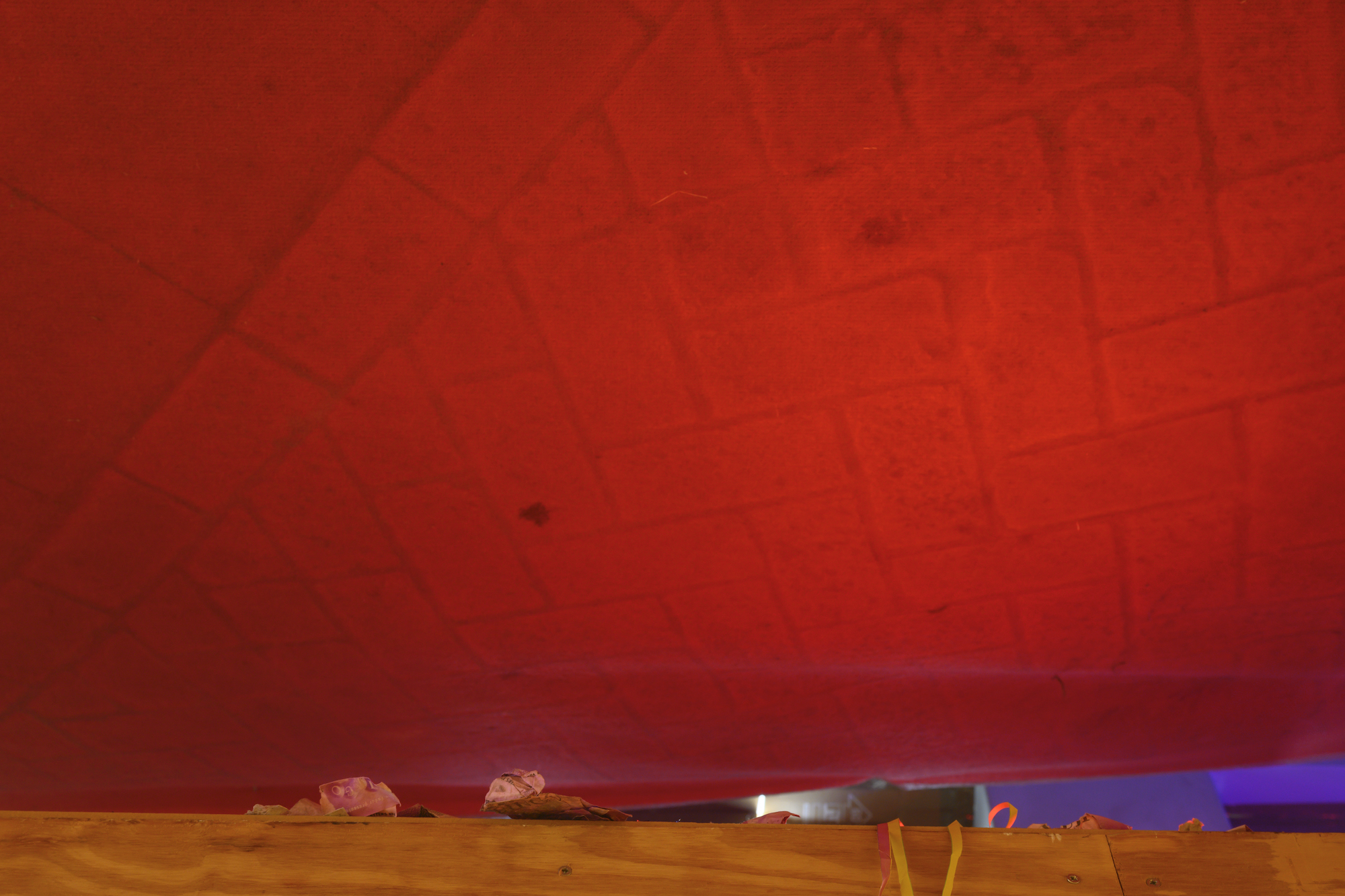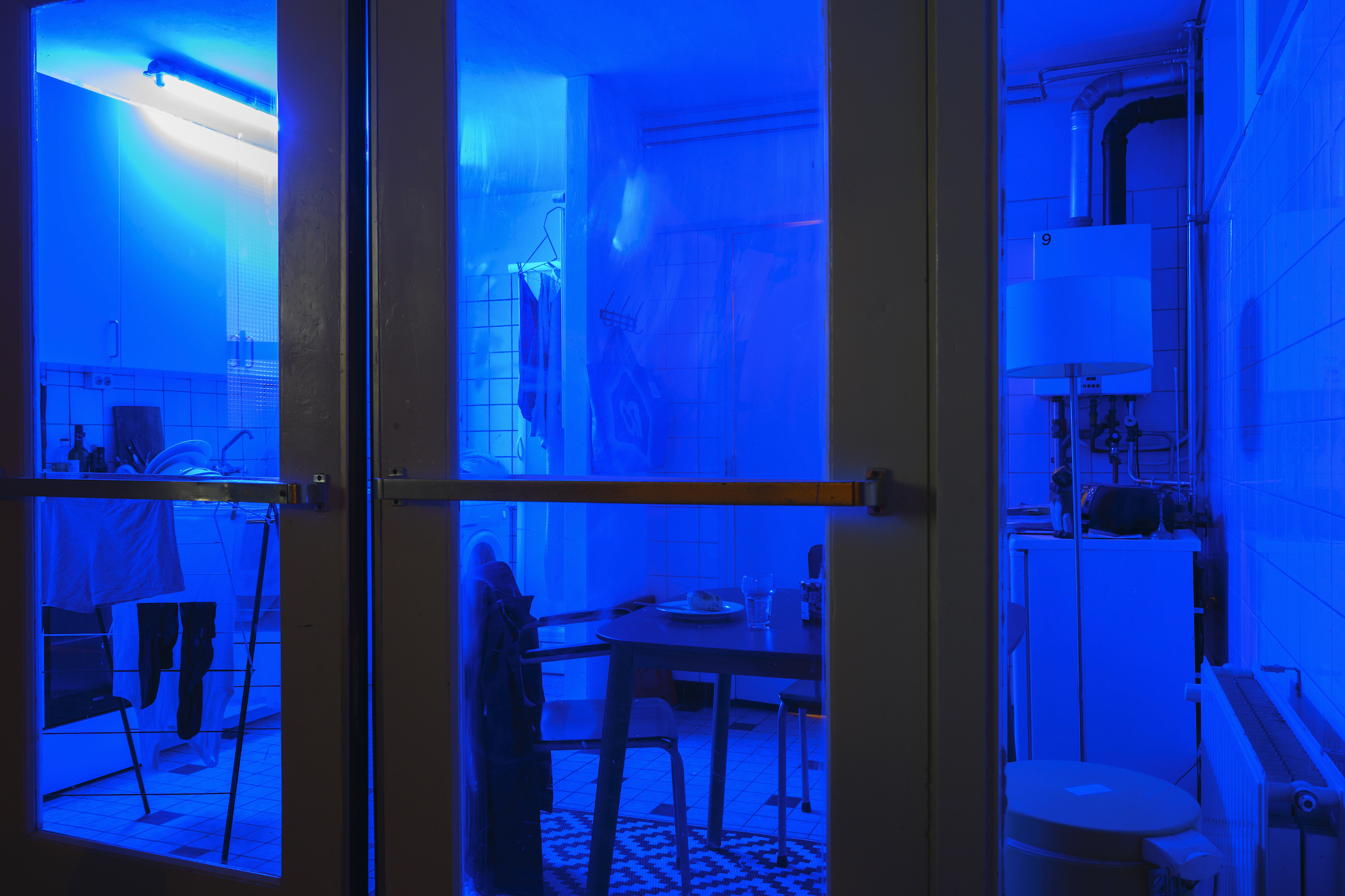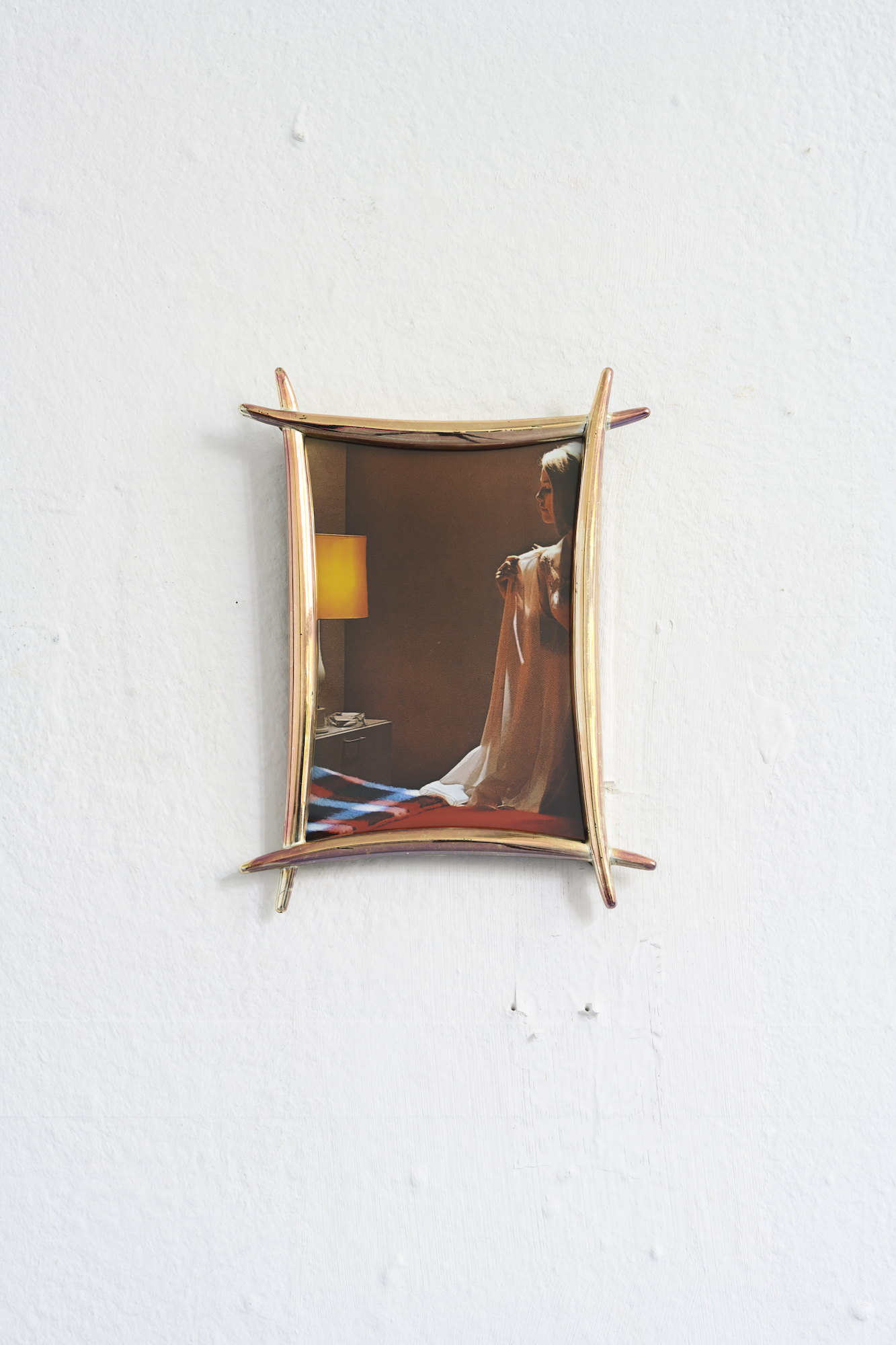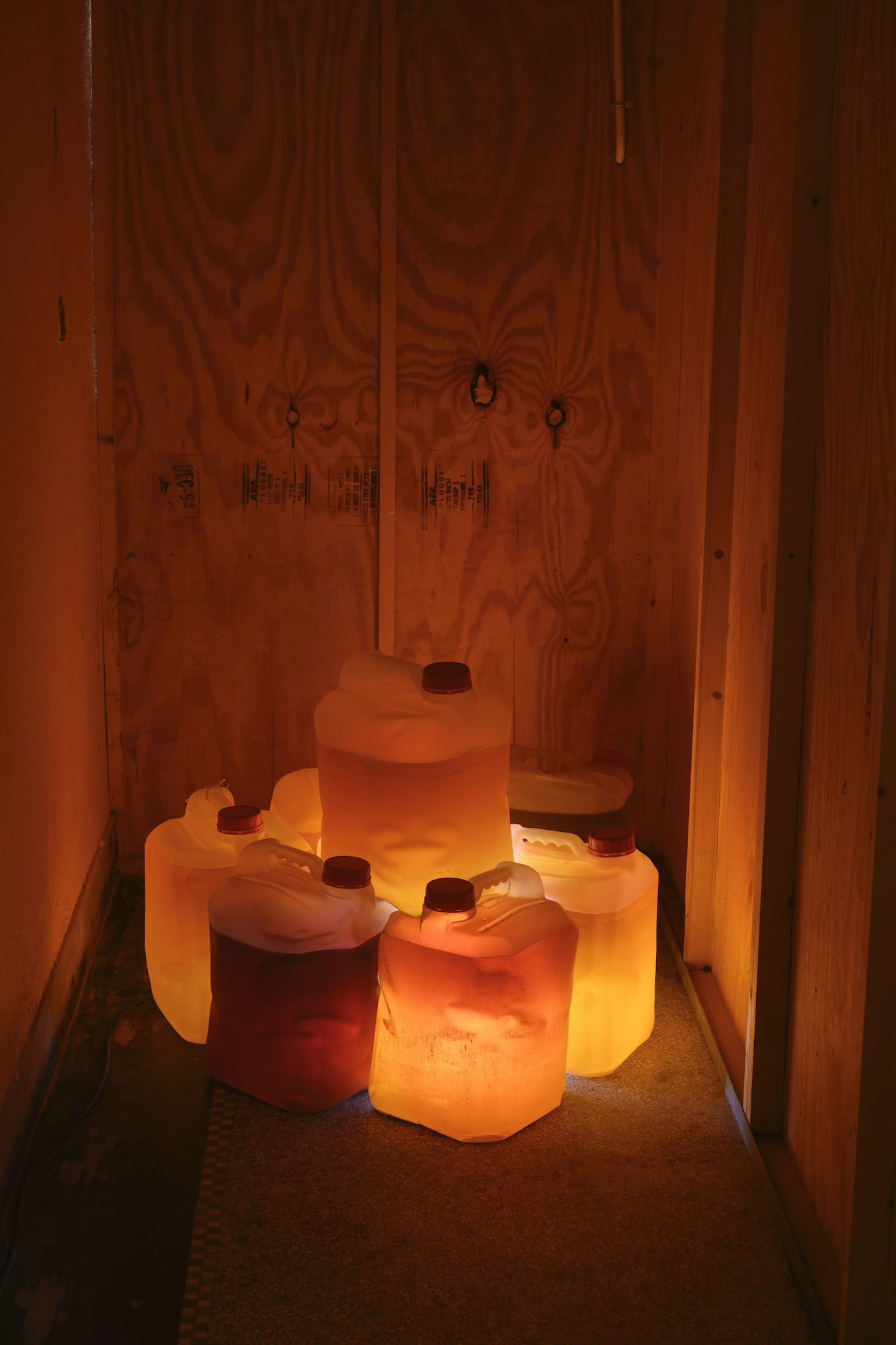As a prologue to the residency period, on the 1st of May 2019 (Labor Day) the artist collected a bottle of his urine in a show of solidarity with the original low-wage laborers of Tilburg, the kruikenzeikers. This first gesture set Van Breda on a path of probing the rhythms and intimate functionings of his body as part of a larger dialogue with ‘otherness’ – training his attention on unknown territories of his own existence as well as on a range of human/non human/tangible/ invisible actors, so as to render them (in the words of political theorist Jane Bennett) “more audible, more detectable, more sensible.”
Van Breda also took to carefully scrutinizing the residency space itself, investigating and activating its horizontal and vertical spatial registers not only over the normal course of his daily routines, but also through deliberate processes of exertion: climbing ladders and scaffolding, crawling in the attic, and chasing plays of light and shadow across the walls. A quest inspired, in part, by Gaston Bachelard’s ‘poetics of space,’ which posits the house — or, in Van Breda’s case, the guest atelier — as a site that simultaneously localizes memory and shelters the imagination. The residency as a protected space for reflection and reverie.
Meanwhile, the artist’s fascination extended into the world beyond the confines of Leo XIII-straat. Historical images, clippings from daily newspapers, rumors and fairy tales, curiosities hauled in from the city streets... these (and more) fueled the artist’s creative impulses to assemblage and experimentation. Just as the daily collection of urine rendered Van Breda’s body a sieve, filtering and recycling the environment during his stay, the body of the guest atelier became a dynamic receptacle for gathering and sifting through mountains of matter and information: with Van Breda building up and tearing down installations multiple times over the course of the residency period.
Excerpt from text by Carolyn F. Strauss.
Read full text here.
